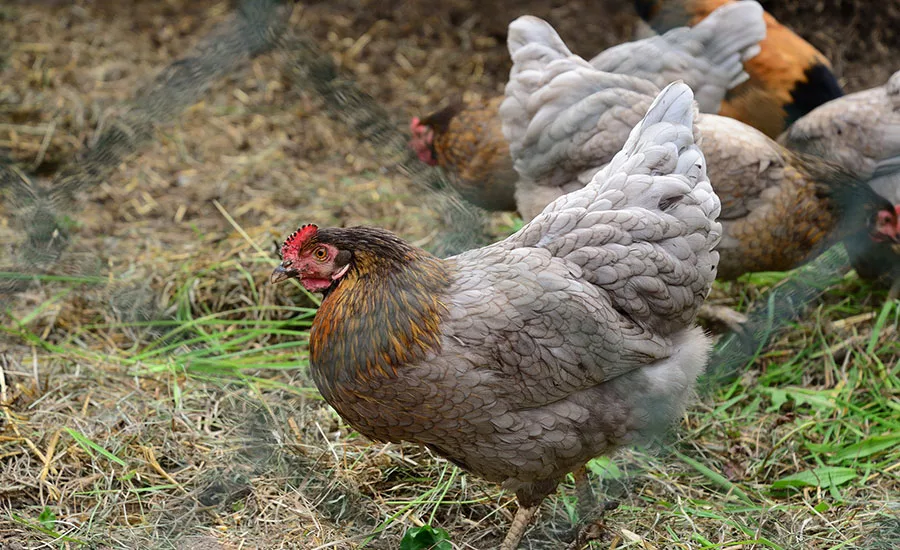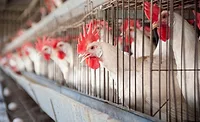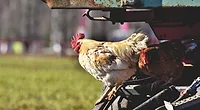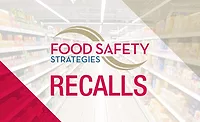UGA Researchers Find Origins of Global Spread of Salmonella Enteritidis

University of Georgia (UGA) researchers have found evidence for the origins of the global spread of Salmonella Enteritidis, which has caused multiple outbreaks of the foodborne pandemic and has been linked to poultry products.
Xiangyu Deng of UGA's Center for Food Safety led the research team, and the team analyzed over 30,000 genomes of S. Enteritidis. The team used hypothesis-driven data mining, and the samples were taken from global sources and the international trade of live poultry over five decades. The team's conclusions were that the spread most likely started in poultry breeding stocks, or the progenitors chosen to produce future generations of chickens.
During the 1980s, S. Enteritidis infections linked to poultry products increased, and were occurring simultaneously in America and Europe. Soon, S. Enteritidis reached other continents. From 2015-2018, Europe experienced its largest Salmonella outbreak ever, across 16 countries, due to contaminated eggs. However, the mystery of how the bacteria quickly spread across continents decades ago, and how it has caused such large outbreaks in recent history, had remained a historical puzzle—until now.
According to Deng, his team "attempted to connect the dots" to solve the mystery of the S. Enteritidis pandemic, “which is how the pathogen simultaneously increased in so many parts of the world.” To solve the mystery, his team had to learn how the poultry production industry has changed over the past 80 years.
In 1948 and 1951, "The Chicken of Tomorrow" contests were held in the U.S. with the goal of improving poultry breeding stocks—e.g., to breed bigger and better chicken. During the time period, chicken was not eaten as a main source of protein because the birds were small. From the contests, several breeders emerged, and as time passed, they consolidated through mergers and acquisitions.
By the late 2000s, only a few of these group remained, which resulted in highly centralized sourcing and large international trade of breeding stocks. Originally, researchers thought that S. Enteritidis-infected poultry breeding stocks made the most sense for the synchronized and expansive spread of the illness.
Deng's team needed large amounts of data—more than individual labs could give them. Instead, the team used publicly available Salmonella genomes which they obtained through sources such as GenomeTrackr and EnteroBase. The team also obtained decades' worth of international trade data of live poultry from the Food and Agriculture Organization of the United Nations, U.S. Department of Agriculture Foreign Agricultural Services, and Observatory of Economic Complexity.
Looking for quick answers on food safety topics?
Try Ask FSM, our new smart AI search tool.
Ask FSM →
“Our data mining is hypothesis-driven and integrative. I think that’s the key to how we managed to not get lost in huge volumes of genome data,” Deng said.
After his team looked at the data, it was found that recent isolates from domestically raised poultry in the U.S. and Suriname were "genetically near-identical." This was important because the most-likely overlap in poultry production systems between the two countries is breeding stock supply.
After this discovery, the team expanded genomic investigations to global populations of S. Enteritidis. They were able to reconstruct evolutionary history and population dynamics of the pathogen, and found that the global dispersal of the poultry pathogens most likely had centralized origins.
The scientists then integrated the data with import/export records of live poultry between countries, which led them to the conclusion that the centralized origins were S. Enteritidis-infected breeding stocks. The reason that similar genomes appeared on different continents was because bacteria was then disseminated through subsequent generations of birds.
“Poultry production is a notable venue for repeated emergence of additional Salmonella strains,” Deng explained. “Despite decades of significant progress of Salmonella control in poultry, the evidence provided here calls for further investigation and potential intervention into the global spread of Salmonella from centralized origins at the pinnacle of poultry production.”
The study was partially funded by a Hatch project from the U.S. Department of Agriculture National Institute of Food and Agriculture, and the other authors include Shaoting Li, Yingshu He, and David Ames Mann.
Read the full study here in the journal Nature Communications.








